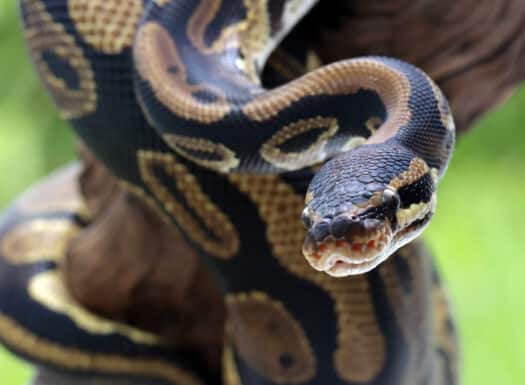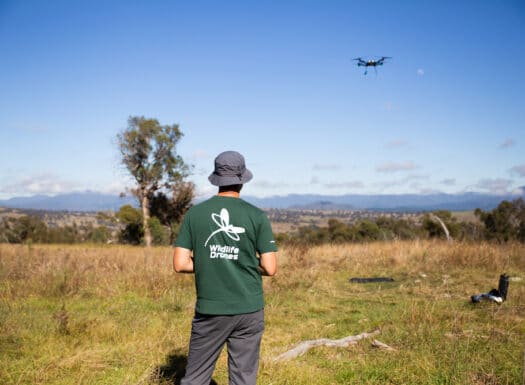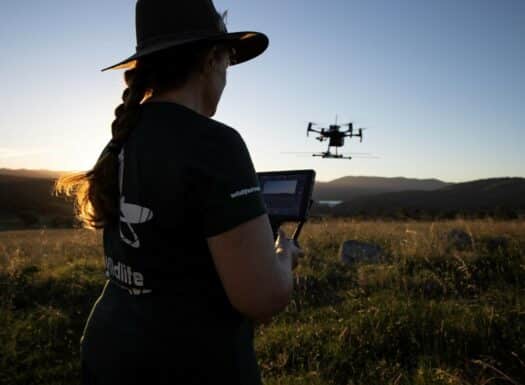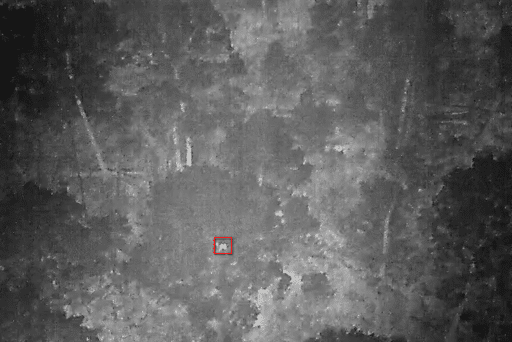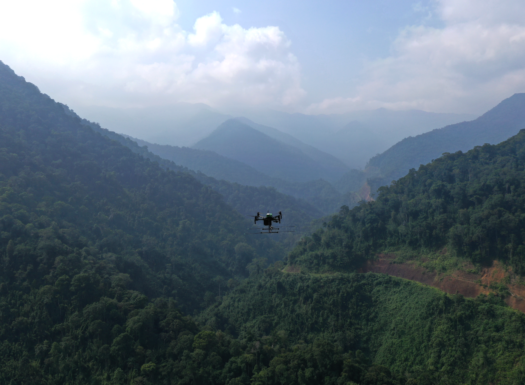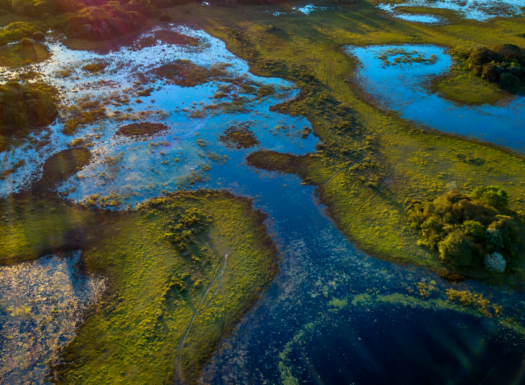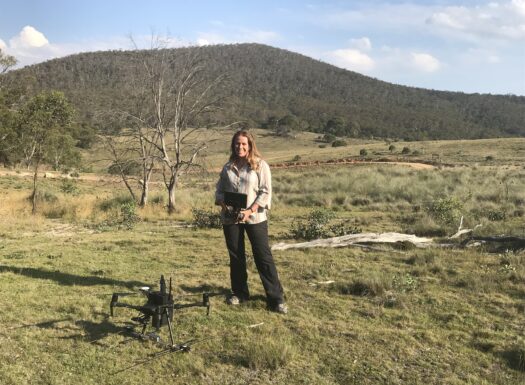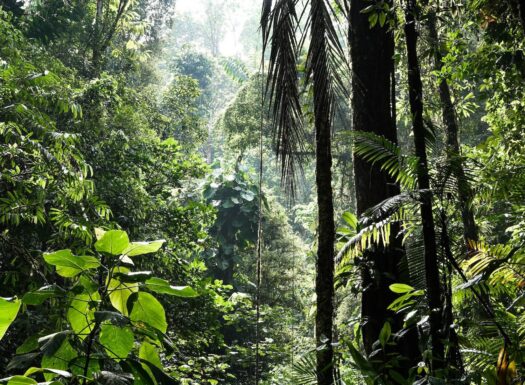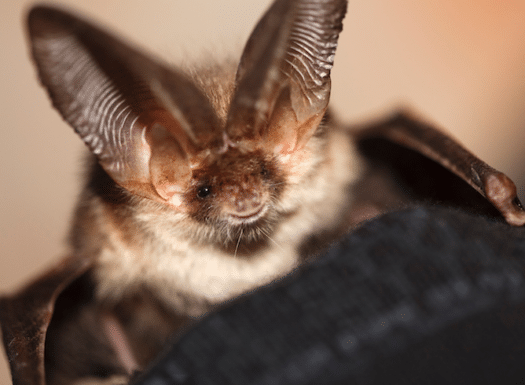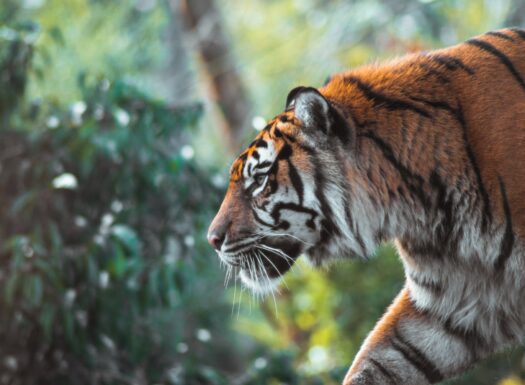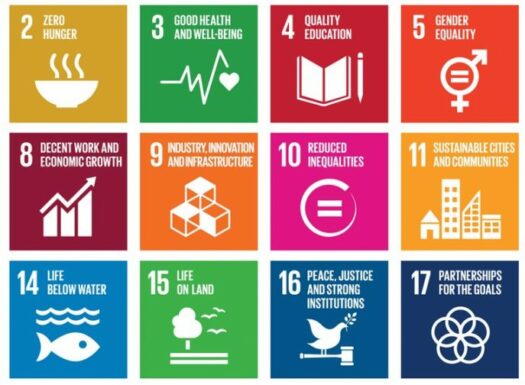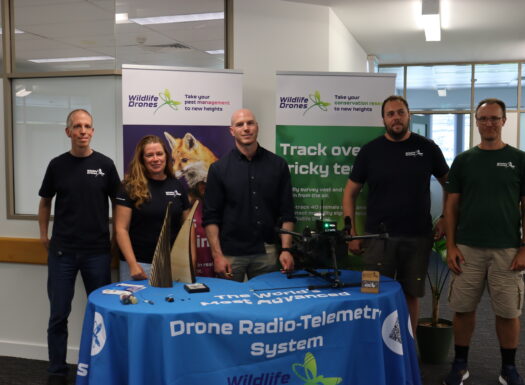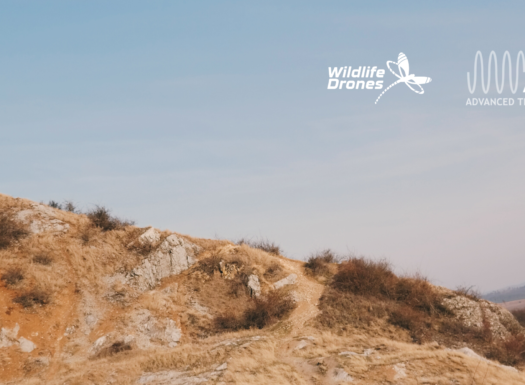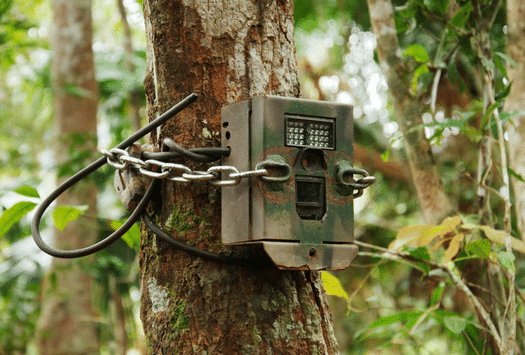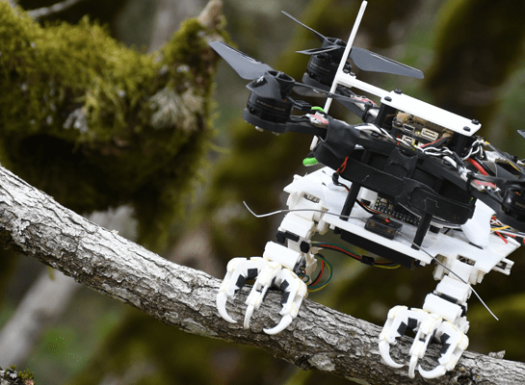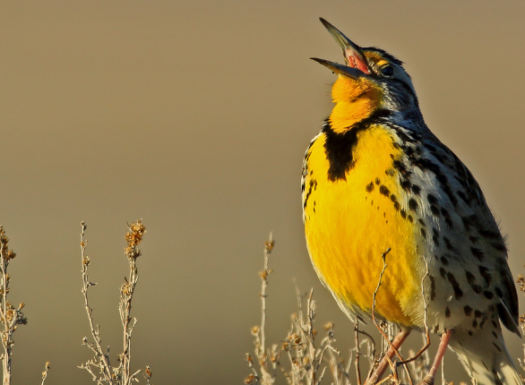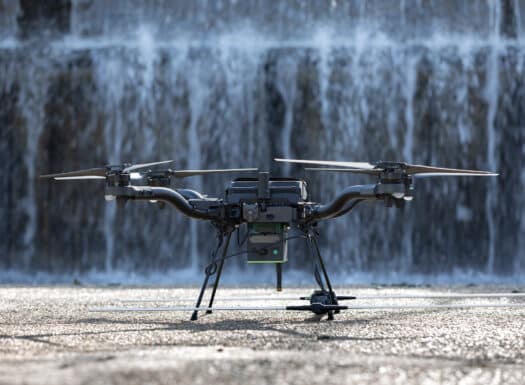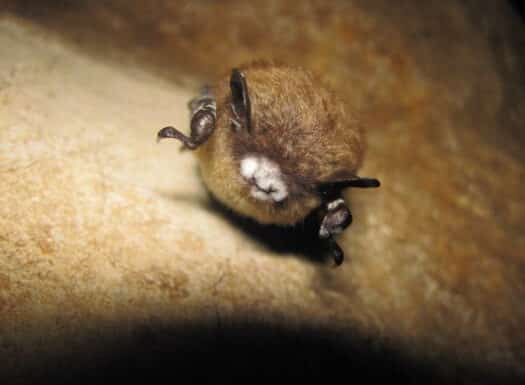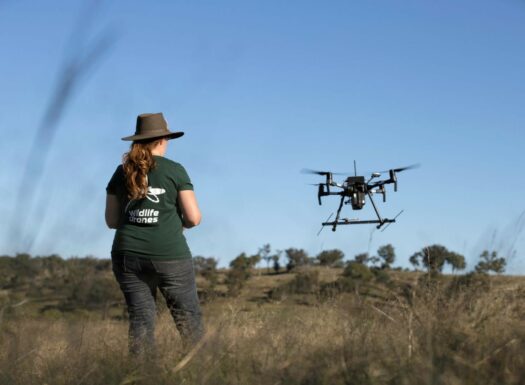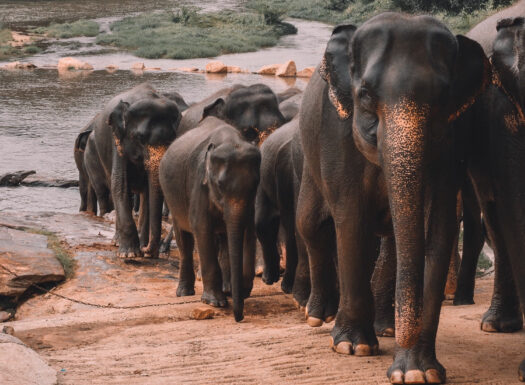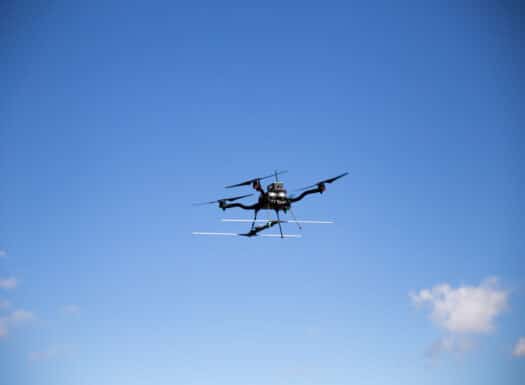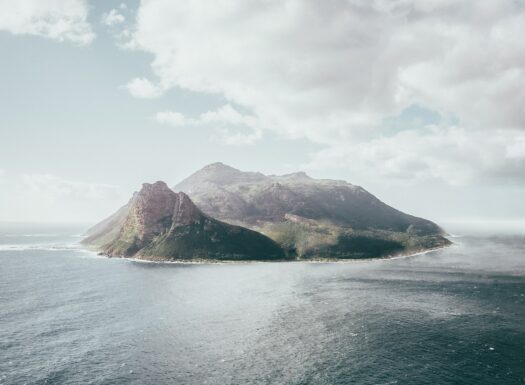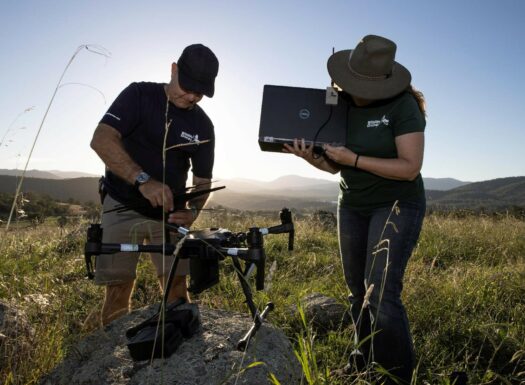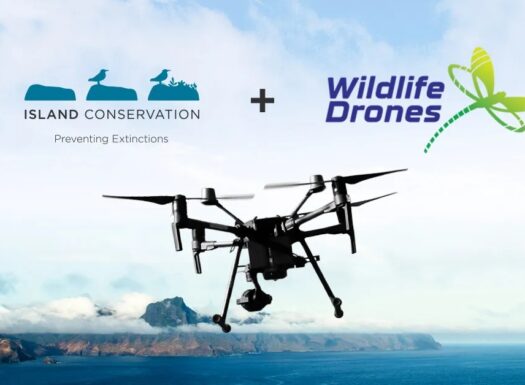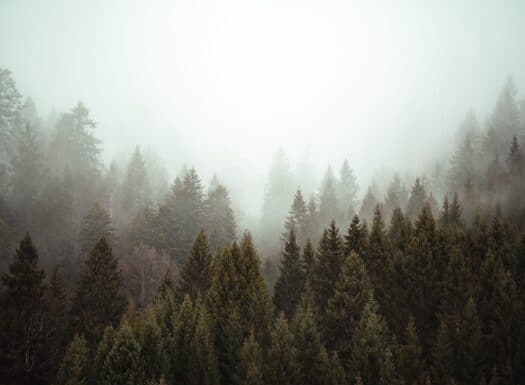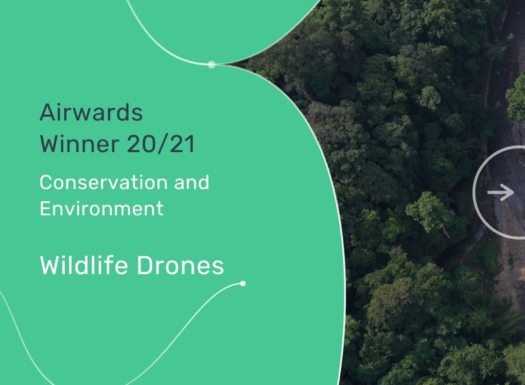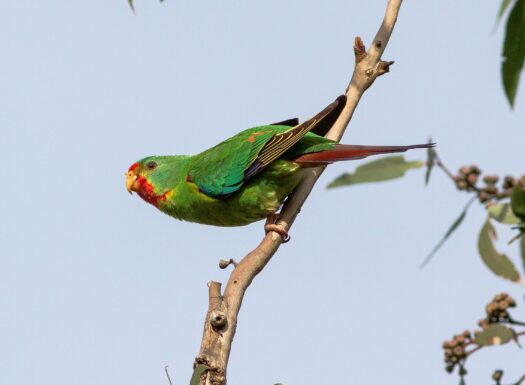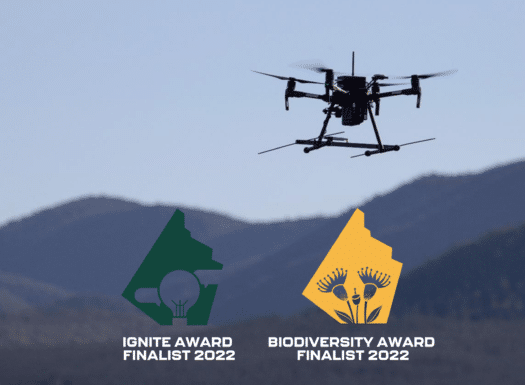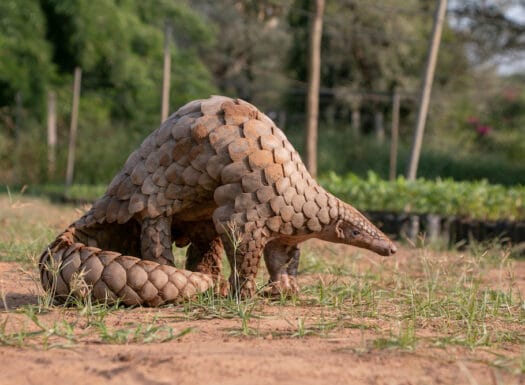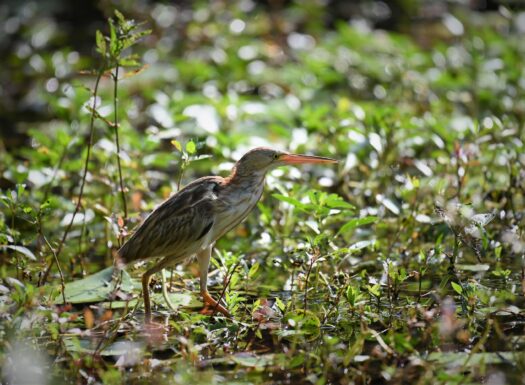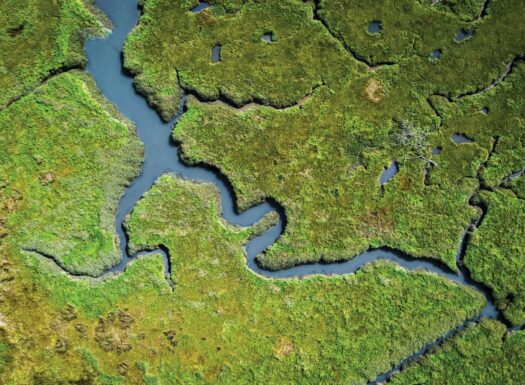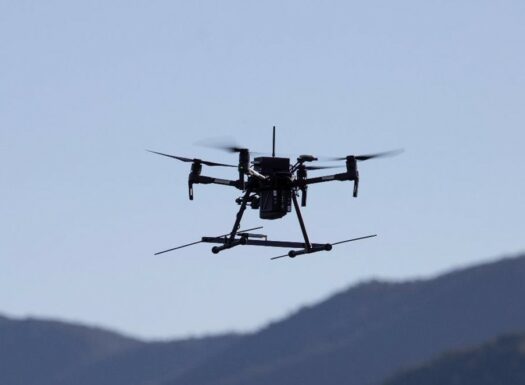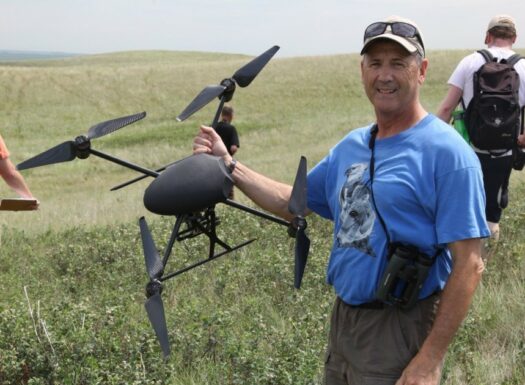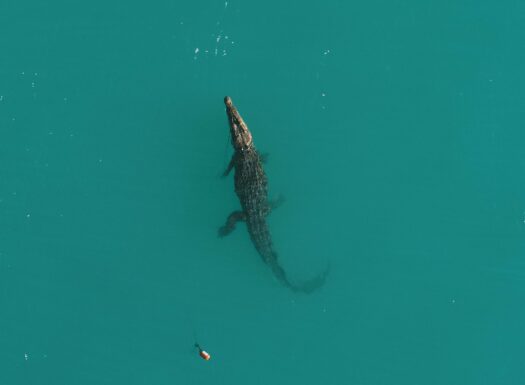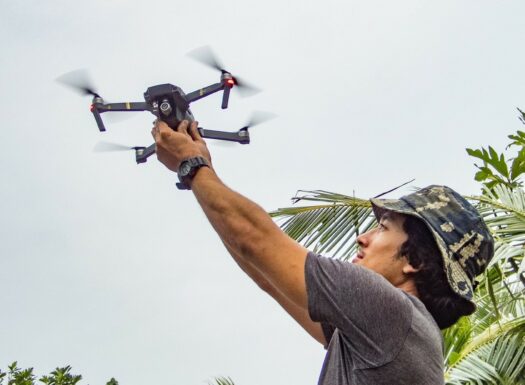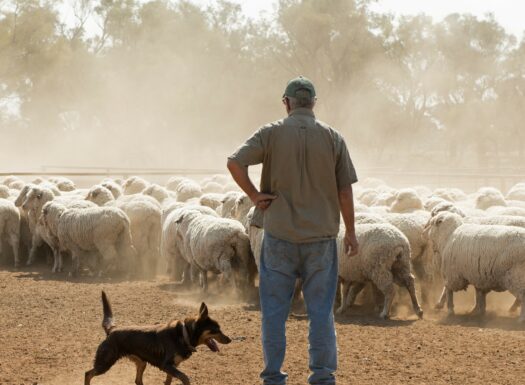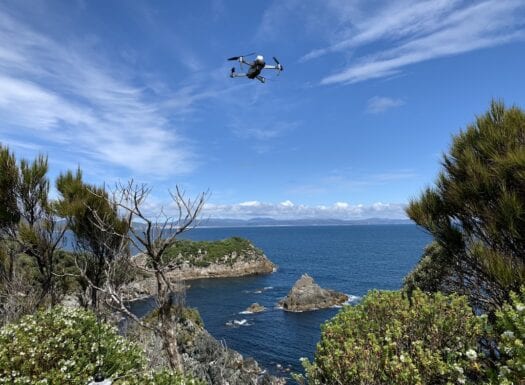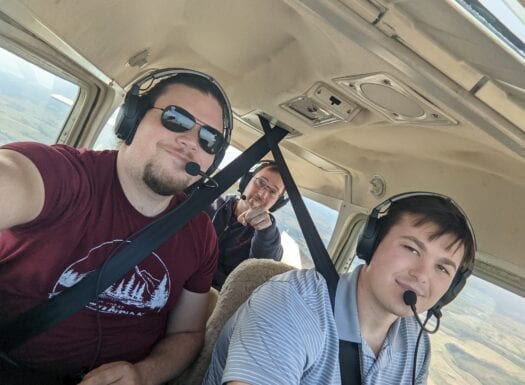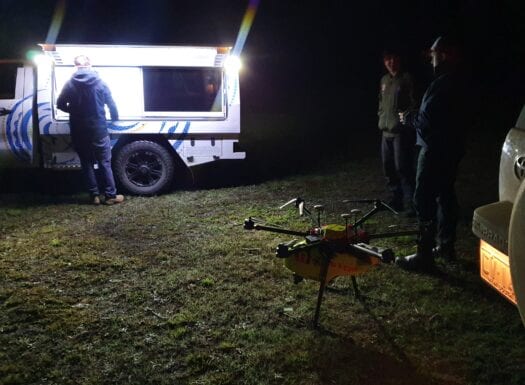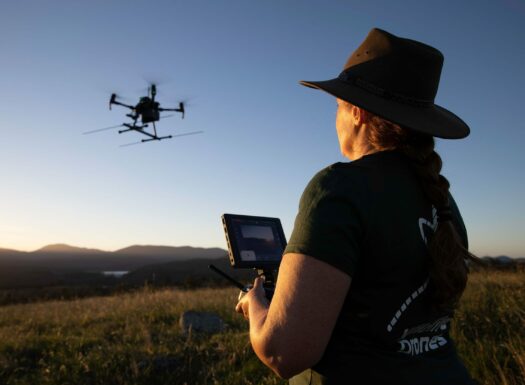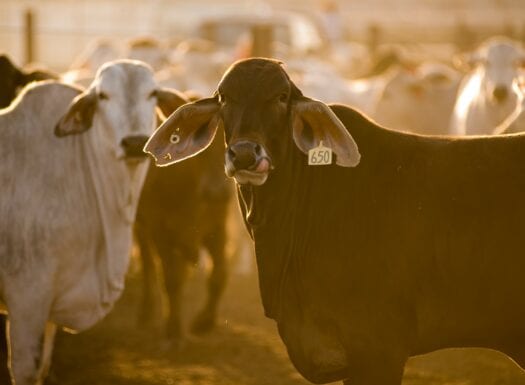Radio-tracking Reptiles
Whether it’s the invasive Burmese python, or deadly Australian brown snake, reptiles are notoriously difficult to monitor. Their cryptic nature makes them hard to spot, and they often inhabit challenging terrain, like dense tropical jungle, or swampy marshland, which makes them hard to follow with traditional VHF radio telemetry techniques. As a result, it’s estimated
Drone Pilot Phil Keaton
Meet Phil who is one of the skilled drone pilots at Wildlife Drones. He plays a crucial role in product development by flying and testing improvements to our cutting-edge hardware and software and provides valuable feedback to guide the development team. Every week he’ll head out to our testing site and use his flying expertise
Four tools for bat conservation research
Of the 1,400 bat species alive today, approximately 15 per cent are considered threatened by the IUCN. Alongside habitat destruction and hunting, the spread of wildlife diseases like white-nose syndrome (WNS) is a leading cause of bat population decline. WNS is particularly problematic in the United States and Canada where it has devastated native bat
Radio telemetry in a time of changing technology
Today, wildlife professionals around the world have access to more animal tracking methods than ever before. Across the board, tags are getting smaller and more powerful, making it possible to track a wider range of animals with a higher degree of accuracy. As global pioneers of drone radio telemetry, Wildlife Drones has spent the better
Wildlife Drones’ Thermal Survey Locates Koalas for GHD
Innovative drone technology advances Koala impact assessment and conservation efforts across Australia. Wildlife Drones, an Australian drone sensor technology company, conducts thermal imaging surveys to detect koalas and greater gliders across eastern Australia to increase the efficiency and accuracy of impact assessments and conservation research. This includes koala surveys in partnership with GHD on major
Challenges of tracking highly mobile species
Small, agile and capable of travelling vast distances, mobile species like birds and bats are notoriously difficult to monitor. As well as moving quickly through the landscape, their small size often means they can only be tracked with tiny Very High Frequency (VHF) radio tags. In this article, we discuss the challenges of tracking highly
Drone Pilot Dr Debbie Saunders
In the second part of our interview with Dr Debbie Saunders, CEO, founder, and Chief Remote Pilot at Wildlife Drones, we delve deeper into her journey as a drone pilot and the remarkable impact her work has had on wildlife tracking and conservation. Join us as we explore Dr Saunders’ experiences, insights, and the incredible
Biodiversity offsets
The 2021 UN Biodiversity Conference (COP15) marked the beginning of the process of developing the Post-2020 Global Biodiversity Framework. This Framework sets out an approach to guide actions worldwide to preserve and protect nature through to 2030. However, successfully implementing this framework requires a significant increase in the amount of biodiversity finance available globally. In
Drone Pilot Stories Debbie Saunders
For over 20 years, Dr Debbie Saunders has worked as an ecologist and studied the movements of small migratory birds. Frustrated by the limitations of radio-tracking manually, Dr Saunders was inspired to develop a practical solution with wide-ranging applicability. Wildlife Drones is now an award-winning start-up that is currently working with a range of people
Investing in Biodiversity Conservation
The urgent need for greater investment in biodiversity conservation Australia’s State of the Environment Report paints a bleak picture of a national environment under extreme pressure. Despite the clear need to take action to prevent further environmental damage, the Report highlights critical shortfalls in the level of resources currently dedicated to environmental management. In this
Tools for bat research
At Wildlife Drones, we’ve been lucky enough to work with Copperhead Environmental Consulting to help track federally endangered Indiana bats. In this article we’re sharing some of the things we learnt about the five most common tools that help scientists undertake bat conservation research—including drones. 1. Mist nets Mist nets are sheets of fine nylon
Tiger Monitoring with Drones 2023
Sariska Tiger Reserve is in a semi-arid region that spans over 1200 square kilometres and boasts a diverse range of flora and fauna, including top predators like tigers and leopards. However, the reserve is under threat from anthropological pressure and a drastic increase in the cattle population. The local villagers, who traditionally depended on the
UN Sustainable Development Goals
Adopted by all United Nations (UN) member nations in 2015, the 2030 Agenda for Sustainable Development outlines a path towards peace and prosperity for people and the planet. At the heart of this plan are 17 Sustainable Development Goals (SDGs), which represent a call to action for all countries to end poverty and reduce inequality,
Independent Senator David Pocock visits Wildlife Drones
Independent Senator David Pocock visited the deep tech startup Wildlife Drones in Canberra to see the world’s most advanced drone radio-telemetry technology first-hand. Wildlife Drones was pleased to host Independent Senator David Pocock in their Canberra office and showcase their cutting-edge technology which is used to track both invasive and threatened species globally. There were
Groundbreaking tech partnership ATS & Wildlife Drones
Most groundbreaking tech partnership for wildlife conservation in 2023: ATS & Wildlife Drones combine their technological expertise to better monitor and protect wildlife Wildlife Drones, a tech startup company based in Australia, has joined forces with Advanced Telemetry Solutions based in Isanti, MN, one of the world’s leading radio-tag manufacturers. Together they will integrate and
5 uses of camera traps
Invented more than a century ago, camera traps are one of the most commonly used wildlife monitoring tools in the biodiversity conservation toolkit. Capable of recording accurate data with minimal disturbance, camera traps are used by scientists worldwide. Here are five common applications of camera traps for conservation. 1. Endangered species monitoring Camera traps are
3 bio-inspired drones
As payload technology continues to evolve, more and more researchers are turning to drones to undertake wildlife monitoring. RGB cameras and thermal imaging are making aerial mapping easier than ever before; Wildlife Drones’ unique radio-telemetry system is helping clients to monitor animal behaviour more quickly and with less effort; and new aerial seeding technology is
Grasslands, the home of ground-dwelling birds
Teeming with wildflowers and native animals, grasslands—or prairies—as they are commonly known in the American Midwest, stretch across vast swathes of the United States. From songbirds to raptors, grasslands are home to a staggering number of bird species—many of which are small and difficult to track. With Thanksgiving just around the corner, we thought we’d
Flying your drone in the mountains
5 things you need to know when flying your drone in the mountains Drones have transformed environmental research by making it easier than ever before to access challenging landscapes—including rugged mountain terrain. But flying in mountains at high altitudes can be more complex than flying your drone in open, flat cleared areas. Here are five
Drones for wildlife conservation
In recent years, drones have revolutionised the way scientists study wildlife. Drone cameras are more powerful, drone platforms are lighter and quieter, and new payloads have come online, making it easier than ever before to gain valuable insights into animal behaviour. Curious about how drones could help your conservation project? In this article, we discuss
Modern technology and Indigenous knowledge
Indigenous people have cared for countries around the world for tens of thousands of years. This ancient connection to the land has fostered a deep understanding of sustainable land management practices. Increasingly, environmental managers are recognising the importance of pairing Indigenous knowledge with scientific approaches to wildlife conservation. In this article, we take a look at
Wildlife disease and conservation
Anyone who’s ever seen a ‘zombie deer’ with chronic wasting disease, or a Tasmanian devil suffering from devil facial tumour, knows how devastating wildlife disease can be. In much the same way that invasive species and noxious weeds wreak havoc on native ecosystems, wildlife diseases pose a significant threat to biodiversity. In our previous article
10 things to know before your first drone flight
If you’ve recently become a drone pilot and you’re itching to get your new drone outside it can be tempting to rush out the door. After all, there’s nothing quite like taking your new drone on its first flight and seeing the world from a whole new perspective. But there are a few important things
Press Release – Freefly Systems Partnership
American drone manufacturer Freefly Systems and innovative sensor technology startup, Wildlife Drones, announce partnership American drone manufacturer Freefly Systems have announced a partnership with Australian conservation tech start-up Wildlife Drones to launch the world’s most advanced radio-telemetry system incorporating US made drones. Freefly Systems have over a decade of experience bringing innovative products to the
Preventing human-wildlife conflict
Each year, September 4 marks National Wildlife Day in the United States. It’s a chance to It’s a chance to raise awareness of endangered species across America, and reflect on what work is needed to encourage peaceful coexistence with wildlife. So in honour of #nationalwildlifeday, we’re taking a deep dive into human-wildlife conflict. We’ll explore
Drones and wildlife laws
At Wildlife Drones we know how important it is to respect local drone laws designed to protect native wildlife. But we’ve also learnt first-hand just how difficult it can be to keep up with changes in government drone regulations. That’s why we’ve pulled together this short article on the 3 things you need to know
Island conservation and protection
Galápagos tortoises, Komodo dragons, Darwin’s finches—these are just a few of the many animals that call islands home. According to the Institute of Zoology, islands support 15-20% of all mammal, bird, amphibian and plant species. In doing so, islands play an important role in preserving the unique genetic material of species that often aren’t found
5 things you need to pack for your field trip
Whether you’re a university student, conservation ecologist or marine biologist, field trips are often one of the most important and rewarding parts of a career in science. But apart from your research equipment, it can be difficult to know what to pack for your field trip—particularly if you’re just starting out. Your university or employer
Conservation partnership with Island Conservation
International nonprofit organization Island Conservation and Australian deep tech startup Wildlife Drones have announced a long-term partnership that will provide unprecedented capacity for large-scale wildlife telemetry operations in endangered species conservation. The collaboration will focus on islands across the Pacific Ocean, with ambitions to eventually expand implementation around the world. Background The rapid loss of biodiversity places ecosystems at
Forests and woodlands
From the snow-covered boreal forests of the far Northern Hemisphere to the dense tropical jungle of the Amazon, forests cover one-third of the Earth’s surface. Home to more than three-quarters of all life on land, they are one of the most biodiverse ecosystems on the planet. However, forest landscapes are disappearing at an alarming rate.
Wildlife Drones wins Airward
Wildlife Drones, an Australian startup delivering technology to conservation projects globally, has won this year’s Conservation and Environment Airwards for their collaboration with NGO Save Vietnam’s Wildlife to track and protect pangolins from poaching and extinction. Airwards recognises positive drone use cases from around the world and showcases innovations and the positive impacts of drones.
Wildlife Drones pioneers world-first tracking of snakes
In a world first, drones have been successfully used to radio-track the movements of Eastern Brown Snakes in Australia. This achievement comes as the result of a collaboration between the Australian National University, ACT Snake Removals and Wildlife Drones, an Australian technology start-up. Associate Professor Gavin Smith is the lead researcher of a project to
The challenges of tracking migratory birds
World Migratory Bird Day (WMBD) is all about celebrating the world’s wonderful migratory birds. To help raise awareness of the threats faced by migratory birds, and the urgent need to conserve their habitats, we’re taking a look at two of Australia’s most prominent endangered migratory birds: the Swift Parrot and Regent Honeyeater. We’re also stepping
Sustainable agriculture for wildlife conservation
As the global population continues to increase, so does our demand for food. Across the world nearly 40% of land is dedicated to agriculture. In addition to providing space to grow crops and raise livestock, this land is important habitat for endangered species, who seek refuge in remnant woodlands, native grasslands and farm dams and
Wildlife Drones award finalist
Innovative drone sensor technology startup, Wildlife Drones, leading the way in sustainable wildlife and environmental monitoring Wildlife Drones has developed the world’s most advanced drone-based animal tracking technology, and has been selected as a finalist in two separate categories of the 33rd National Banksia Sustainability awards. As a deep tech startup company, Wildlife Drones is
Poaching and the illegal wildlife trade
Each year, March 3 marks World Wildlife Day. It’s a day to celebrate the world’s wild plants and animals and raise awareness of the threats they face. This year’s theme is ‘Recovering key species for ecosystem restoration.’ In line with the UN Sustainable Development Goals (SDGs), this year’s aim is to raise awareness of the
Wetlands and endangered species
From large flocks of waterbirds to choruses of frogs, wetlands are home to a dazzling array of wildlife. As one of the most productive ecosystems on the planet, wetlands play a crucial role supporting mammals, birds, fish, reptiles and amphibians throughout their life cycles. However, wetlands across the world are in decline. Between 1970 and
Wetlands and invasive species
From the coastal mangroves and sawgrass marshes of the Everglades in southern Florida to the vast floodplains of Kakadu in northern Australia, wetlands are home to an astounding array of plant and animal species. Found on every continent except Antarctica, wetlands are one of the most biologically diverse ecosystems on the planet. However, like many
Tips for acing your next grant application
Grant applications are a quintessential part of a wildlife researcher’s life. While they can be time-consuming and tedious to write, when successful – they are highly rewarding. There is no magic formula for grant applications. However, there are some golden rules that can help maximise your chances of success. To help you ace your next
The struggles of radio-tracking (and how drones can help)
For decades, radio telemetry has been the go-to method for anyone seeking to track and understand animal movements. But the effort involved, in proportion to the results accrued, has always been significant and costly. Despite this, radio-tracking wildlife is still commonly practiced. This is because the radio-transmitters are relatively inexpensive, and the tags can be
A passion for drones helping pave the way for the next generation of wildlife researchers
“I just can’t walk away from this!” declares Professor David Bird. The excitement in the voice of the 72-year-old academic is obvious. It’s been nearly a decade and a half since Bird first became aware of the possible uses for drones to aid his lifelong dedication to studying wildlife. Since then, the recently retired Emeritus
What a catch! Tackling problem crocodiles with drones
Conservation isn’t always a black and white matter of saving species and maintaining their ecosystem at all costs. Often, it ends up being a matter of balancing the needs of both animals and humans, and finding a happy medium for sustainable coexistence. Dr Matt Brien understands that. Having poured a lifetime of research into crocodiles,
Protecting our islands with conservation technology
Scattered across our planet, Earth’s islands are discrete hotspots of biodiversity. While their isolated nature provides fertile grounds for biodiversity to thrive, islands can also leave native plants and wildlife vulnerable – particularly when invasive species enter the picture. Embracing innovative technology That’s why bodies such as Island Conservation work towards removing invasive species from
4 ways drones can help you on the farm
Agricultural technology is enabling farmers and producers to keep up with the demands of our growing world by helping automate centuries-old farming practices. This includes drones – who are proving their worth in this physically intensive industry. Read on to find out how drones can help you on the farm… 1. Weed and crop
Using drones to transport Kakapo sperm
As the world’s only nocturnal and flightless parrot, the critically endangered Kakapo is often referred to as a true avian oddity. But to the people who work tirelessly to save them from extinction, the Kakapo is more than just a novel bird. With roughly 200 kakapo left in the world, each individual is tagged and given a
Flying high in search of agile bats
“Oh, man – it’s essentially trying to find a needle in a haystack while on the bed of a semi-truck driving down the expressway!” – Will Seiter As a description of some of the challenges in trying to track the movements of tiny bats, Will Seiter’s metaphor is hard to beat. It’s heartfelt too, coming
Deploying thermal imaging drones to help save wildlife
Jamie Holyoak has been using thermal imaging technology mounted on drones to search for hidden wildlife – particularly koalas – since 2013. He has worked on behalf of a range of industries including environmental management, property development and mining, as well as working with Dreamworld’s wildlife conservation project. After the 2019/20 bushfires across Australia, however, his
Advancing the Animal Tracking Game
That faint buzzing you can hear is the sound of endangered animals being saved from extinction. It’s the sound of invasive species being turned back from a damaging incursion. And it’s the sound of livestock being monitored across the farmlands of the future. It’s the sound of one tool that has revolutionised the art of animal
Can integrating livestock with wildlife work?
We recently moved into our new office at the Centre for Entrepreneurial Agri-Technology (CEAT). As a result, we’ve been interested in exploring different applications for our drone tracking technology. The human population is rapidly growing and with it is the demand for land devoted to agriculture and livestock. But with this rise in demand, land for

